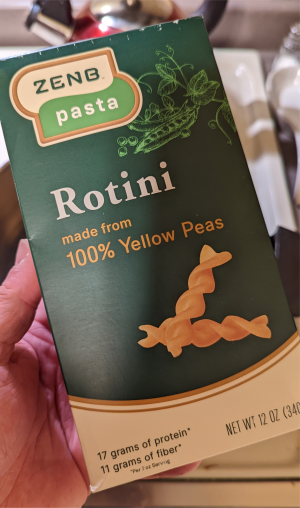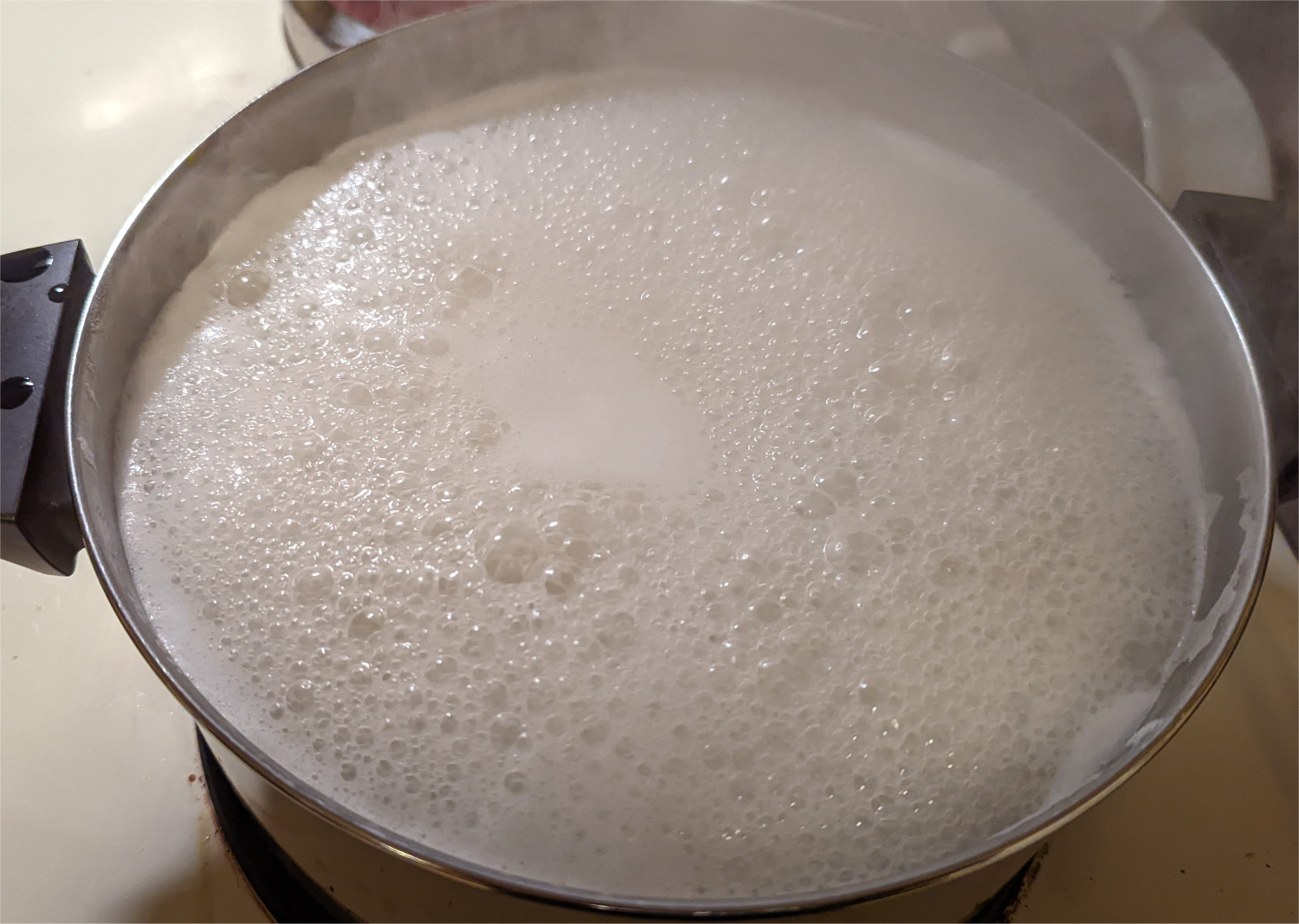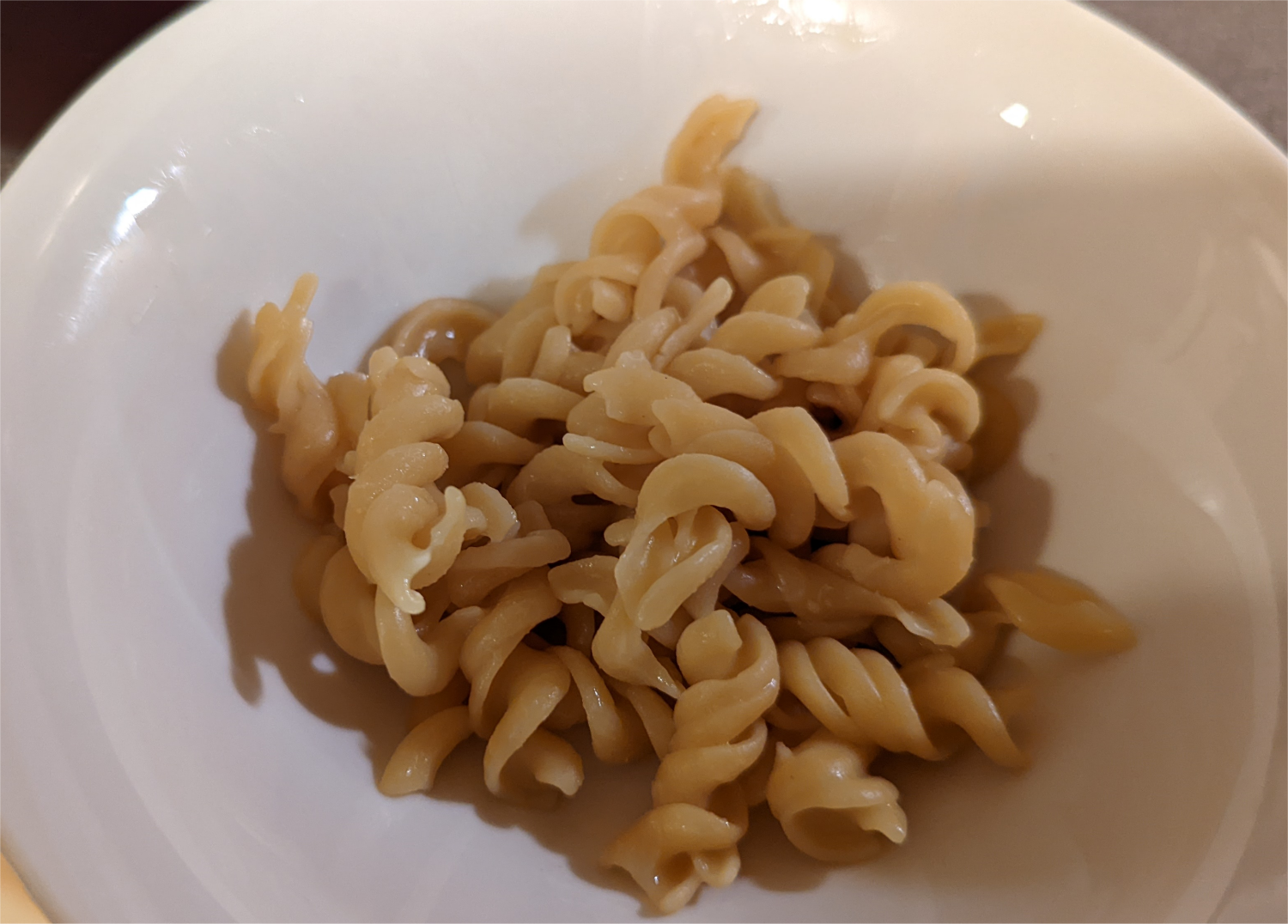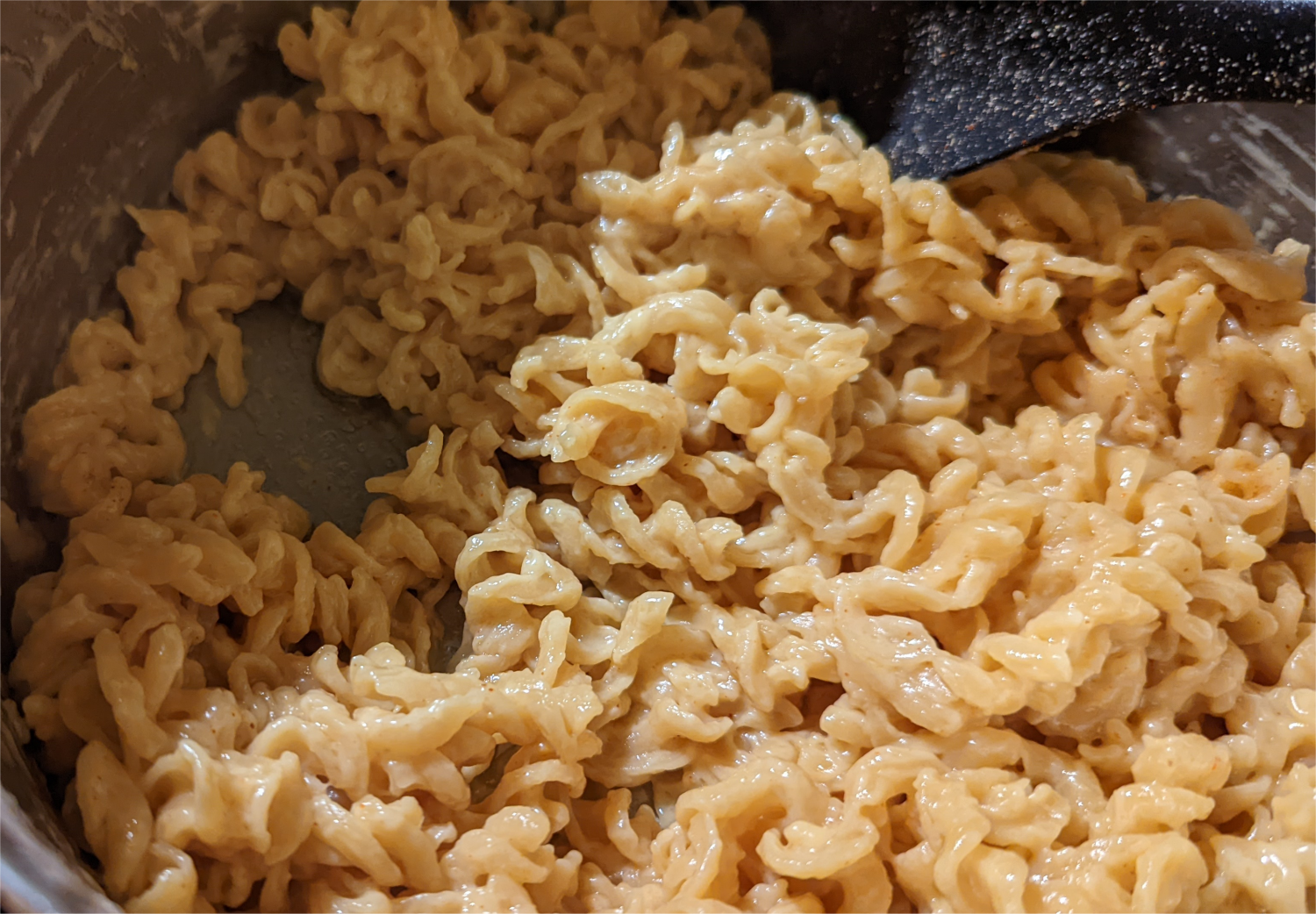 We don’t eat a lot of yellow peas in the United States, but they’re a thing. They enjoy some prominence in Persian and Indian cuisines. And they’re the only ingredient in ZENB pasta.
We don’t eat a lot of yellow peas in the United States, but they’re a thing. They enjoy some prominence in Persian and Indian cuisines. And they’re the only ingredient in ZENB pasta.
I’ve never had a better-for-me pasta that I liked well enough to genuinely consider eating regularly. (Longtime readers who remember Christy’s noodles: I’ll stand by that review today, but those just didn’t stick for the money.) ZENB has a good chance of hanging around. You can get it in rotini, penne, or elbow, and there’s a one-per-household starter pack that will get you a box of each of the first two for $9.99.
I did that. We tried the rotini tonight. I just made up a macaroni and cheese recipe to try it out, and Amelia and I had it for our dinner. With the raw product, there’s no hint you’re not handling regular pasta:

Cooking instructions are similar as well, though there is some mention here and there of a slight aroma as well as foaming during cooking. The aroma is faint and vaguely “legumey,” I suppose, but I think even the smell of regular pasta is stronger. I didn’t notice it past trying to notice it.
The foaming is significant, and something you need to preemptively allow for. It’s not something that will stop at the top of the pot with the spoon laid across. Use a bigger pot than you think you need.

I wondered whether it would be more fragile during cooking, and it does “shed” a little bit. This is especially noticeable when you pour it in a colander, as it leaves a thin layer of homogenous yellow pea goop underneath. Again, it’s not offensive—just a little odd.
I pulled some off for us to taste straight, and my on-the-spot mac and cheese had butter, colby jack, garlic powder, and red pepper in it.


Amelia and I both agreed that it was a pretty remarkable pasta experience. The texture is excellent—nine minutes was a perfect al dente—and the taste is as or more subtle than the taste of semolina pasta. I believe you could serve this without disclosure and there’s a good chance it wouldn’t be detected.
So, there has to be some bad news, right? Well, a bit. For one thing, while ZENB pasta is better for you than regular pasta, it’s not diet food. Each ounce of ZENB has 100 calories, which is the same as regular pasta. The bonus is primarily the fiber, the protein, the lack of gluten, and the low glycemic index (peas, remember?).
The other is the cost. Each box of ZENB will run you more than $5. Also, this is for a 12-oz. box, and regular pasta is generally sold in 16-oz. packages. So it’s not just “a bit higher,” but actually several times more expensive.
The bottom line is it’s better food for your body than regular pasta is. It’s made from a high-fiber vegetable, so if you eat deliberately and enjoy your meal, there’s a good chance you’ll feel fuller with less.
What’s that worth? For pasta?
9/10
You might also like:
- Cajun pasta by BoWilliams.com
Disclaimer 1: Everything I know about Cajun cuisine is from restaurants or displaced natives. I’ve n… - Review: Orange Vanilla Coca-Cola
Even for a sporadic mass-media consumer like me, it’s been tough to miss the tremendous advertising … - Pasta from scratch lands at Earth and Stone’s Madison location
We’ve been tantalized for weeks, but the day is finally here: there is house-made pasta available at… - Review: Flatiron Pepper Co.’s “I Can’t Feel My Face” dried pepper blend
When a spicy product includes “I Can’t Feel My Face” in its name, it’s reasonable to assume that it … - Gran’ma’s cheese straws, made into bread
You know, I thought I hadn’t given you a recipe before, but that shrimp is out there. Well, here’s a…